If you’ve ever visited the remarkable Hill of Crosses in Lithuania, I’m sure you were never quite the same afterward. At least that’s how I experienced it a number of years ago when I went there.
 One gets the undeniable feeling that some silent spirit of vitality encompasses and surrounds the entire hill the way God’s Spirit hovered over the waters at the dawn of creation.
One gets the undeniable feeling that some silent spirit of vitality encompasses and surrounds the entire hill the way God’s Spirit hovered over the waters at the dawn of creation.
It is located on outskirts of the city of Šiauliai in the northern center of the country, but it literally radiates throughout Europe as an ocean of peace, a ray of eternity, a monument to the suffering of a noble people.
Pope John Paul II said that the Hill “testifies to Europe and to the whole world the faith of the people of this land.” Indeed.
If you were to measure the Hill of Crosses from base to summit, it would probably stand no more than fifteen or eighteen feet in elevation. Yet, Mount Everest never stood as majestic or formidable as this little hillock. It can rightly be called the spiritual heart of the country – and the people.

A History of Incredible Heroism
The casual tourist to this beautiful Baltic nation today would probably not appreciate the extent to which this people suffered for their faith in the last century. The kindness and overt goodness of the Lithuanians hides a fierce Catholic fighting spirit that has served them well for the eight centuries of their existence as a nation.
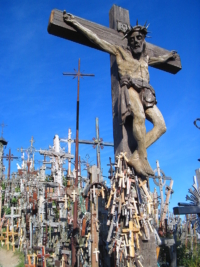 Lithuanian warriors fought alongside the Polish commander, Jan Sobieski, as he routed the Muslims laying siege to the city of Vienna in 1683. Then, in gratitude for all they did to save Christianity, the major powers of Europe stood by while the country was partitioned and absorbed by the Russian empire for a good portion of the 19th century.
Lithuanian warriors fought alongside the Polish commander, Jan Sobieski, as he routed the Muslims laying siege to the city of Vienna in 1683. Then, in gratitude for all they did to save Christianity, the major powers of Europe stood by while the country was partitioned and absorbed by the Russian empire for a good portion of the 19th century.
Then, in the 20th century, the Lithuanian people were victims of not one but two godless occupations – Communism and Nazism – both of which sought to decapitate the Church’s influence over the people and exterminate the Church.
In his marvelous book, The Catholic Martyrs of the Twentieth Century (Crossroad, 2000), Robert Royal quotes a Soviet leader in Lithuania who warned a bishop that “what was achieved in Russia in twenty years will be accomplished in Lithuania in two or three” (248) – and in fact, it was.
In just four days during mid-June of 1941, for example, the Communists forcibly deported 34,000 “enemies” of the regime for no other reason than ethnic hatred. From the early 1940s until the mid-1960s there were as many as one and a quarter million Lithuanians who “disappeared” into Soviet labor camps.
During this same period every single one of the 1450 active priests in the nation experienced arrest, interrogation, prison, torture or all of the above. (Royal, 247-248.) Imagine enduring this level of hatred of your Church.
Millions of Lithuanian Catholics saw their churches turned into museums, their property confiscated, their loved ones murdered, and their faith subjected to an atheistic totalitarian ideology whose goal was the total eradication of God from their hearts.
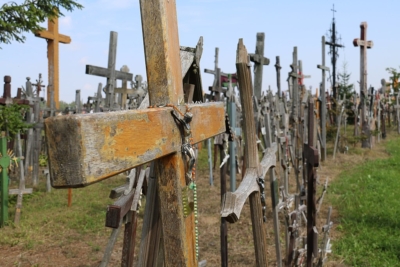 Even into the 1980s, it was a punishable crime in Communist Lithuania for anyone to engage in such subversive activities as teaching the Catholic faith to children or giving religious instruction to anyone under 18.
Even into the 1980s, it was a punishable crime in Communist Lithuania for anyone to engage in such subversive activities as teaching the Catholic faith to children or giving religious instruction to anyone under 18.
Yet, Royal says that, despite the harsh repression and efforts to wipe out the Church, the Catholic population did not diminish at all during that period. It remained at a robust 85%. (Royal, 247)
And the Hill of Crosses was the tangible manifestation of their heroism.
Sadly, Americans don’t know this history, but we should, because it speaks of a remarkable heroic spirit of a people who faced even the worst human atrocities with indomitable faith. It also occurs to me that as the forces of tyranny increase in our country and Catholics bear more than our fair share of abuse, Lithuania’s Hill of Crosses might also become a beacon of hope for our future. Time will tell.
Both a Consolation and a Protest
Its origin as a site of pilgrimage is not clear, but it is said that the Hill of Crosses was a place where people planted crosses in remembrance of their sons who did not return from the country’s uprisings (1831 and 1867) against Czarist Russia that had forcibly incorporated the little Baltic nation into its empire.

By 1900 there were about 150 crosses at the place, and the people kept bringing crosses during the devastation of World War I. By the late 1930s there were 400 crosses there, and the native people continued to plant their crosses and offer prayers there during the Second World War.
The Communist juggernaut that followed World War II led to a skyrocketing number of crosses – as many as 5000 – which were all destroyed in 1961.
Then the Communists bulldozed the Hill.
Did that stop the faithful Lithuanians from bringing more crosses? Not on your life. The Hill was bulldozed twice more in the 1960s and 1970s, with at least two other attempts to destroy it, but the pilgrims kept on coming.
In fact, pilgrimages to the site simply increased as the peaceful resistance to Communism intensified. As almost always happens in tyrannies, however, the authorities eventually shut the processions down and threatened to build a dam on a nearby river so that the area would be permanently covered in water! (They did not, thankfully.)
The Polish Pope Visits
By the time Pope John Paul visited the Hill in 1993 (just after the fall of Communism), there were 55,000 crosses on that acre of sacred ground!
He later referred to the Hill of Crosses as a “Lithuanian Coliseum,” deliberately using the imagery of the early Roman martyrs to make his point about the suffering the Lithuanians endured during the Communist period.
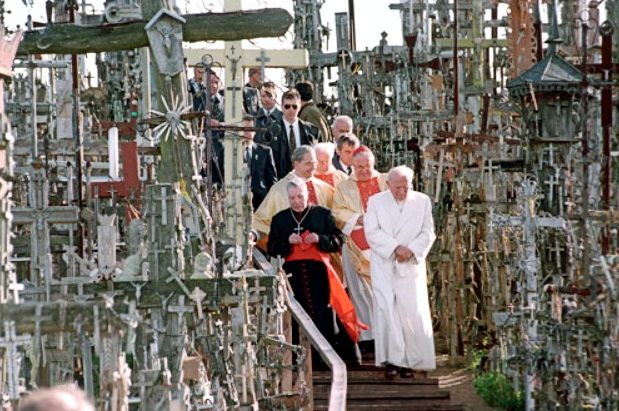
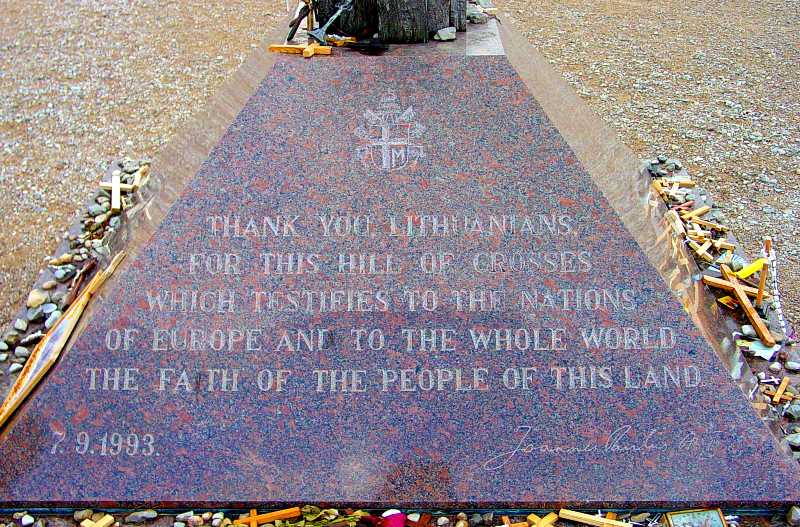
“Thank you Lithuanians for this Hill of Crosses which testifies to Europe and to the whole world the faith of the people of this land.”
~Inscription on the granite monument on the site, a gift of Pope John Paul II (September 7, 1993)
The pilgrimages were officially reinstated in 1997 and continue to draw thousands per year to the shrine, not just from Lithuania but from all over the world now.
Although there are minimal regulations today regarding the erection of crosses on the site, it is generally possible for anyone to place a cross there during a visit. The law allows crosses of up to ten feet without a permit.
The beloved Hill in north-central Lithuania is a sacred window if it is anything. It enshrines a sacred memory, a history of protesting injustice, and one of those creative ways that people of true faith express their devotion when everything has been taken from them and they have nothing else to lean on but the Cross of Jesus Christ.
———-
[Note: This article is a reproduction of the Sacred Windows Email Newsletter of 6/11/23, so it does not end with the regular Soul Work section. Please visit our Newsletter Archives.]
Photo Credits: (Via Wikimedia Commons) Thomas Stegh, CC BY-SA 3.0; Diego Delso (panorama and Virgin Mary statue) CC BY-SA 3.0;Pudelek (Marcin Szala), CC BY-SA 3.0; B. Villalba, CC BY-SA 4.0; Mindaugas Macaitis, CC BY-SA 4.0; NordNordWest (Map), CC BY-SA 3.0; Others: John Paul II, ELTA fotographia; and two images by Peter Darcy.
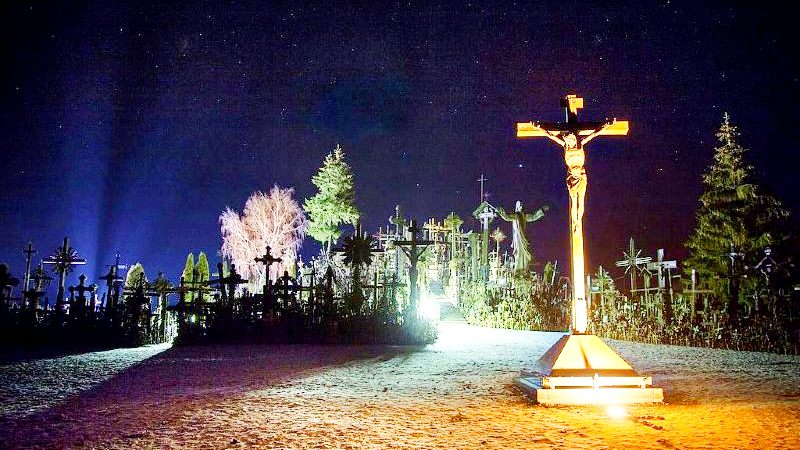
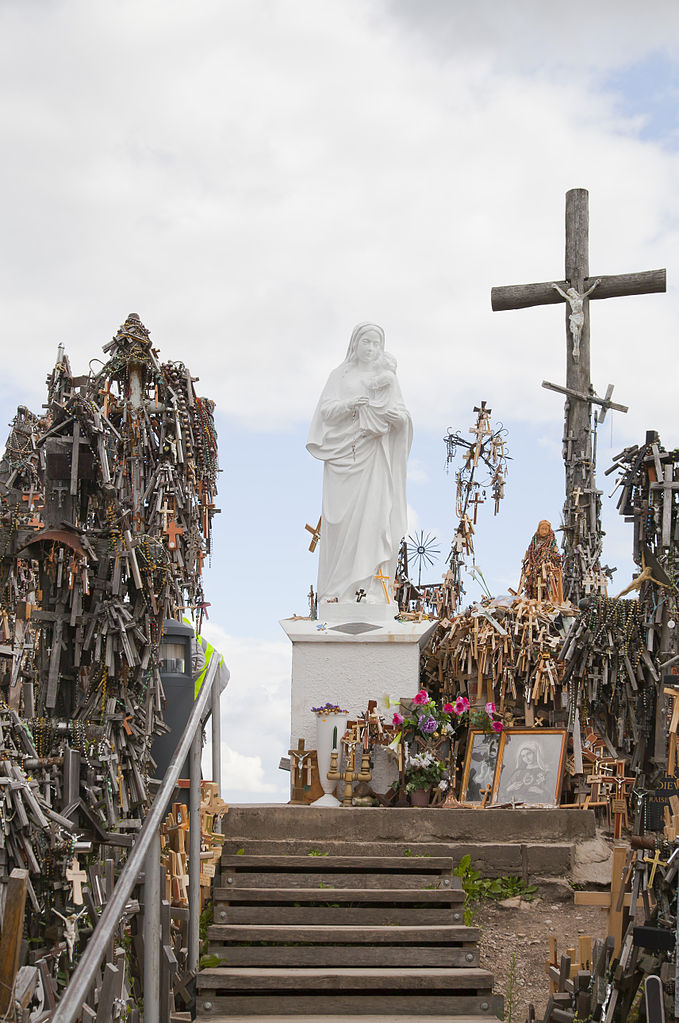
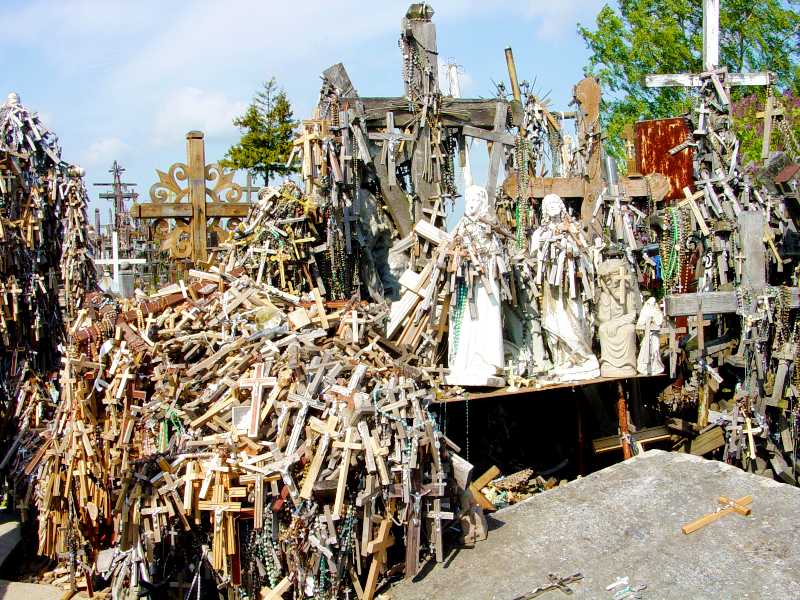



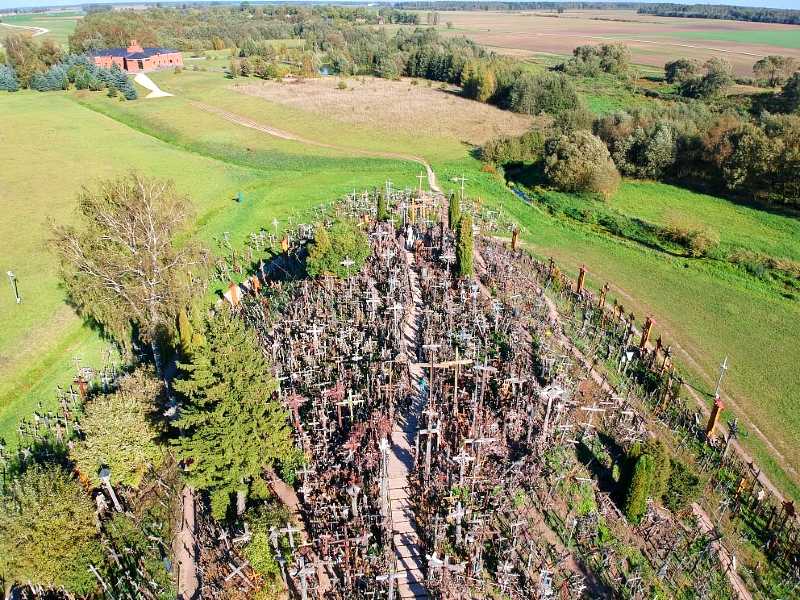
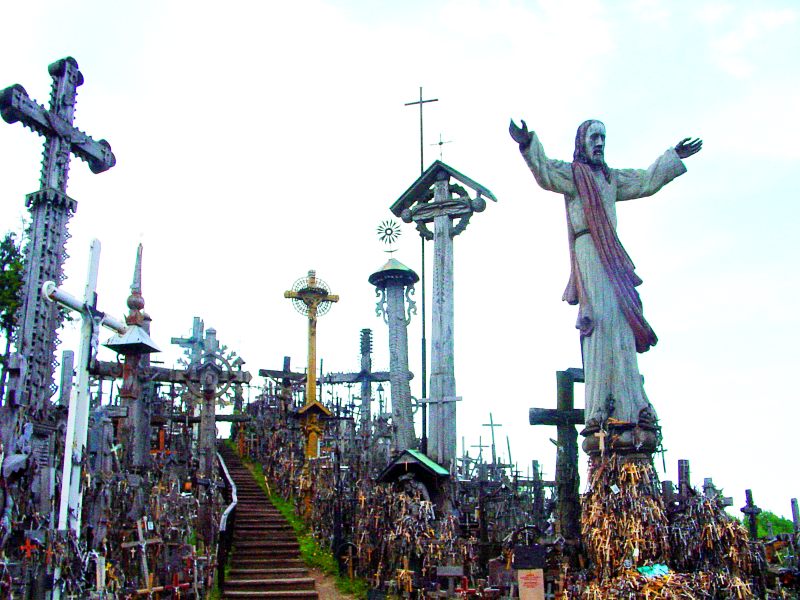
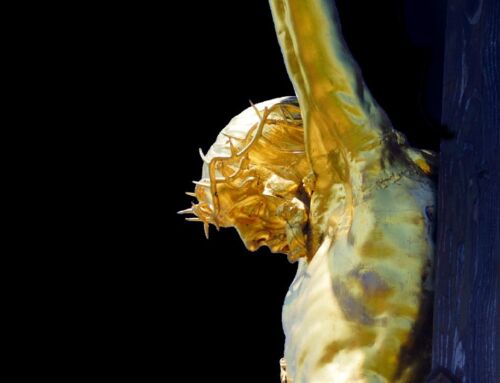
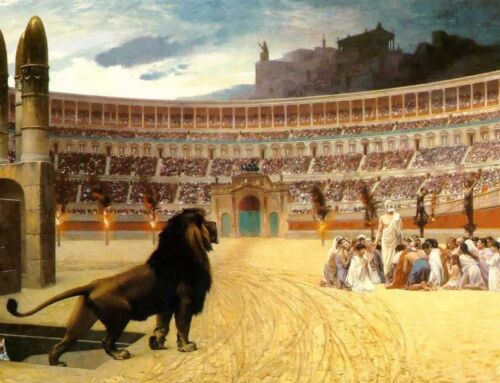
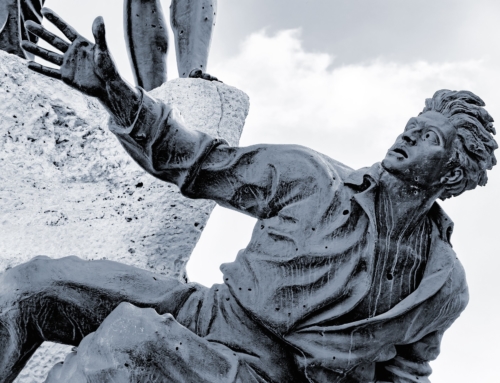
Leave A Comment